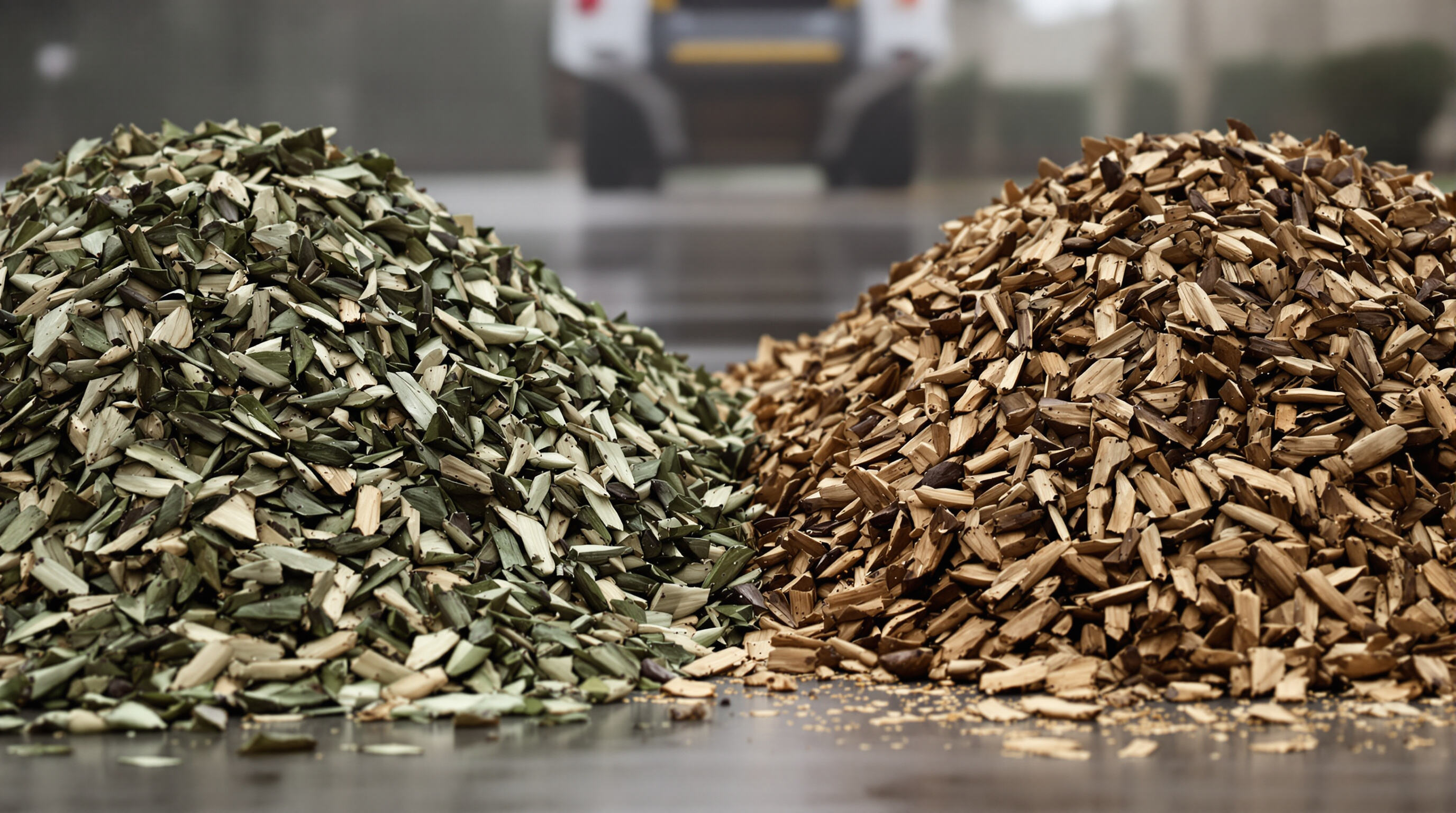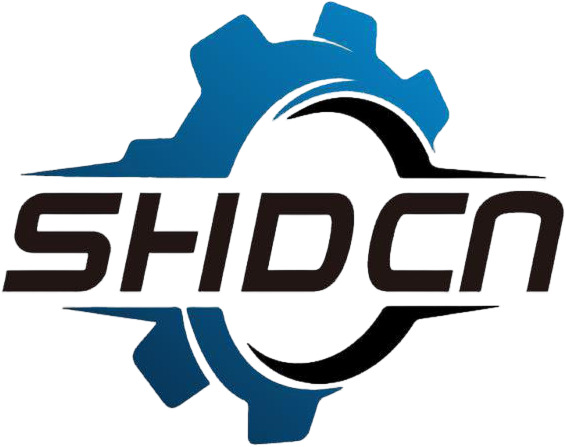Core Function and Working Principles of a Wood Chipper Machine
What Is a Wood Chipper Machine Designed For?
Wood chipper machines take those big chunks of organic stuff we find around yards and gardens, like branches, logs, and all sorts of brush, and turn them into something much easier to handle wood chips. These machines typically have either a spinning drum or disc loaded with sharp blades that chop up whatever gets thrown into the hopper. Think of it kind of like giant scissors where the blades cut against another part called an anvil or counter knife, making those neat little chips perfect for things like mulching or even turning into biomass fuel. What makes these machines so useful is how they transform what would otherwise be messy yard waste into something actually useful again. This not only makes cleaning up after landscaping jobs way simpler but also helps keep our approach to waste management more environmentally friendly in the long run.
Key Differences Between Chipping and Shredding Processes
While both reduce material size, their applications differ significantly:
| Feature | Chipping | Shredding |
|---|---|---|
| Primary Input | Hardwood branches, logs | Soft vegetation, leafy debris |
| Output Size | Uniform wood chips (1-3 inches) | Irregular, stringy fragments |
| Blade Type | Heavy-duty steel blades | Flails or hammers |
| Typical Use | Mulch production, biomass fuel | Composting, green waste disposal |
Shredders are better suited for pliable materials like vines or wet leaves, while chippers deliver efficient processing of woody debris.
How Material Type Influences Wood Chipper Machine Performance
Oak and maple hardwoods need more power and sharper cutting edges compared to softer woods like pine, which really takes a toll on blades over time. When machines deal with all sorts of mixed materials, checking those blades regularly becomes essential work. The thing is, hardwoods can dull cutting surfaces about 40 percent quicker than their softer counterparts according to what many operators have found in practice. Then there's the moisture factor too. Green wood tends to create nice fine chips but puts extra strain on motor systems. Dry wood works better for clean cuts but creates loads of airborne particles during processing. Getting the right match between what's being cut and the machine specs helps avoid costly jams and keeps equipment running longer between replacements.
Common Organic Materials Suitable for Wood Chipper Machines
Branches and Tree Limbs: Maximum Diameter Capacity Guidelines
Wood chipper machines effectively process branches and limbs up to 45mm in diameter, with high-end models featuring reinforced blades and optimized feed chutes to handle irregular shapes without clogging. For best results, operators should remove bark from knotty sections and avoid overloading the intake.
Twigs and Small Brush: Efficient Handling of Light Yard Debris
Light materials like twigs and small brush pass through chippers 15–30% faster due to lower resistance. Twin-blade systems with shredding capabilities break down this debris into consistent mulch, suitable for composting or soil stabilization.
Leaves and Leafy Material: Performance on Green vs. Dry Debris
Green leaves with high moisture content can reduce throughput by 20–35% compared to dry foliage. While dry leaves process efficiently, they generate fine dust that requires frequent air-filter maintenance to prevent clogging.
Logs and Stumps: Feasibility and Practical Limitations
Industrial-grade chippers can handle logs up to 250mm thick, but most residential models are not designed for stumps or root systems. Processing dense hardwoods like oak demands 40% more torque and leads to accelerated blade wear, requiring more frequent sharpening.
Mixed Green Waste: Challenges with Wet vs. Dry Blends
Combining wet grass clippings with dry branches often results in inconsistent chip sizes and increased strain on discharge components. Operators experience 12–18% higher maintenance costs when regularly processing mixed waste compared to sorted materials.
Impact of Moisture Content: Green vs. Dry Material Processing

Moisture Content Impact on Chipping Efficiency
According to some recent research from Forest Research back in 2024, wood chippers actually consume around 18 to 25 percent extra power when dealing with fresh green wood that has about 50 to 60 percent moisture content compared to drier wood which is below 30 percent moisture. The reason? When wood is wetter, there's just more friction on the blades plus all sorts of material tends to stick together, so operators need to slow things down quite a bit, maybe cutting feed rates by somewhere between 15 and 20 percent to keep motors from burning out. And if we look at what happens with hardwood specifically, each additional 5 percent moisture beyond 35 percent drops overall efficiency by roughly 1.7 percent. That kind of decline really adds up over time, which is why many professionals in the industry watch these moisture levels closely during operations.
Case Study: Fresh Tree Limbs vs. Seasoned Wood
Field tests show that fresh oak limbs at 52% moisture took 31 minutes to chip one ton, while seasoned wood at 28% moisture required only 22 minutes on the same machine. Seasoned wood yielded 12% more uniform chips suitable for mulch, whereas green material produced irregular fragments needing secondary screening.
Industry Trends: Increasing Focus on Green Yard Waste Processing
To comply with municipal organic recycling mandates, 67% of U.S. landscaping companies now prioritize green waste processing (EPA, 2023). Modern chippers increasingly include:
- Variable-speed engines that adapt to moisture levels
- Self-cleaning baffles to prevent wet debris buildup
- Torque sensors that automatically adjust feed rates
These advancements support circular economy goals by diverting 18 million tons of annual yard waste from landfills into reusable biomass.
Applications in Landscaping, Forestry, and Sustainable Waste Management
Yard Cleanup and On-Site Mulch Production from Chipped Branches
Landscapers can turn tree limbs and brush into useful mulch right at the job site thanks to wood chipper machines, which saves money on transport for most urban arborists according to a recent study from Landscape Management in 2024. About 8 out of 10 professionals report cutting down on those expensive hauls when they have access to these machines. The benefit goes beyond just saving cash too since fresh mulch gets applied directly where it's needed for things like pathway maintenance and controlling soil erosion. Newer models of chippers can tackle pretty thick branches now, some even managing trunks as wide as fourteen inches across. And there's another bonus nobody talks about much but makes a real difference environmentally speaking. Jobs that process material on location instead of shipping it away cut down on carbon emissions significantly, somewhere around 2.1 metric tons saved per project on average.
Composting and Biomass Energy: Recycling Chipped Wood and Leaves
Chipped wood and leaves serve as carbon-rich inputs in composting, accelerating decomposition by 40% when balanced with nitrogen-rich materials. In energy applications, facilities processing 12 million tons of wood chips annually report 30% higher energy yields than whole-log combustion. Centralized chipping operations now divert 68% of yard waste from landfills in many regions.
Supporting Sustainable Landscaping and Forest Management Practices
Cities across the country are seeing real benefits from incorporating chippers into their urban forestry programs. Since around 2020, many municipalities report roughly 19 percent growth in tree canopy cover at the same time they've cut down on green waste disposal problems. This approach actually helps cities move toward circular economy principles too. For every ton of wood chips produced, we're saving about 0.8 tons worth of synthetic mulch that would otherwise end up in parks and gardens. Portable chipping units are making a big difference in restoring local forests as well. When crews clear out invasive plants, the native vegetation tends to bounce back much quicker than expected. Some treated areas show new growth appearing about 35% faster compared to untreated spots nearby.
Material Limitations and Safety Risks in Wood Chipper Machine Operation
Materials to Avoid: Painted, Treated, and Composite Woods
Wood chipper machines should never process chemically treated lumber, painted wood, or composites like plywood. These materials release toxic fumes during chipping and contaminate mulch or biofuel. Pressure-treated wood may contain arsenic, while adhesives in composite boards corrode blades and compromise machine integrity.
Dangers of Metal, Stones, and Other Foreign Objects
Small bits of metal, stones, and stray wires are actually really dangerous when running equipment. Just think about it - something as tiny as a 2 inch metal fragment can cut down cutting efficiency by almost half and turn into a deadly flying object. The numbers don't lie either. Safety records show several tragic deaths happened because of kickbacks during those two years alone. Before putting anything into the chipper, make sure to check for debris thoroughly. Magnetic separators work wonders here. Following these basic steps saves lives and keeps operations running smoothly without unexpected interruptions.
Contamination Risks in Urban Yard Waste: A Growing Concern
Urban yard waste often contains plastic ties, synthetic netting, and rubber mulch. Surveys show contamination rates exceeding 12% (2023), leading to:
- 30% more downtime from clogged machinery
- Microplastic pollution in compost
- Reduced biofuel quality
Operators must conduct visual inspections and educate clients on proper sorting to minimize contamination and maintain output quality.
FAQ
What types of materials can a wood chipper handle?
A wood chipper can handle a range of organic materials including branches, tree limbs, twigs, and small brush. Some models can also handle logs up to 250mm in thickness. However, materials like painted, treated, and composite woods should be avoided due to toxic fumes.
What is the difference between chipping and shredding?
Chipping involves cutting hardwood branches and logs into uniform wood chips for mulch or biomass fuel, using heavy-duty steel blades. Shredding, on the other hand, reduces soft vegetation and leafy debris into irregular, stringy fragments using flails or hammers, and is mainly used for composting or green waste disposal.
How does moisture content affect wood chipping?
Higher moisture content in wood increases the energy consumption of chippers by 18 to 25 percent and can lead to motor strain. Fresh green wood with high moisture content can also cause a decrease in chipping efficiency and result in less uniform wood chips.
Are there safety risks involved with using a wood chipper?
Yes, operating a wood chipper comes with safety risks, especially from metal, stones, and other foreign objects that can become dangerous projectiles. Proper inspection of materials before chipping and the use of magnetic separators can mitigate these risks.
Table of Contents
- Core Function and Working Principles of a Wood Chipper Machine
- Common Organic Materials Suitable for Wood Chipper Machines
- Impact of Moisture Content: Green vs. Dry Material Processing
- Applications in Landscaping, Forestry, and Sustainable Waste Management
- Material Limitations and Safety Risks in Wood Chipper Machine Operation
- FAQ

